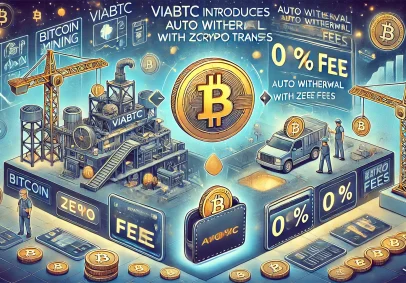What is a blockchain?

Blockchain technology is an innovative development that is changing the way information and assets are exchanged and managed.
At its core, blockchain is a decentralized database that stores information in chains of blocks, each containing a unique set of data and a data hash of the previous block.
In this article, we look at the key foundations of blockchain technology, how it works and its various applications.
How does blockchain technology work?
Blockchain technology operates on a decentralized database that contains an ever-growing chain of blocks, with each block containing a unique set of data. When an additional block is added to the chain, it is linked to the previous block in the chain by means of a cryptographic hash. This hash is a unique numeric identifier that is used as the anchor point for the block, and any change in the data in it results in a new hash.
Each block in the chain contains a record of a specific transaction, along with a timestamp and a unique cryptographic signature. This ensures that the transaction is valid and cannot be changed after it has been added to the blockchain. Because blockchain is decentralized and not monitored by a central agency, transactions can be validated and recorded without intermediaries.
In order to add a new block to the chain, a network of nodes (powerful supercomputers connected into a network) has to come to a consensus about the validity of a transaction. This occurs in a process known as consensus, which involves a series of complex algorithms that allow the network nodes to agree on the status of the chain. Once consensus is reached, a new unit is added to a chain and the transaction is considered completed.
One of the key features of blockchain technology is its immutability. Because data in a blockchain is stored in a decentralized manner, it cannot be changed by one party. Instead, any changes to the data must be made by consensus of network participants, which ensures accuracy and protects the data from tampering.
Another significant feature of blockchain is its transparency. Because the technology is a public accounting system, anyone can view transactions that have been recorded on the blockchain. This creates a high level of openness and accountability, making it difficult for unscrupulous participants to commit fraud online.
At the heart of blockchain technology is a process known as mining, in which a network of computers validates and records transactions on the blockchain. Recently, however, mining has become a complex and resource-intensive process that requires significant computing power and energy. To overcome this obstacle, many miners choose to join mining pools, which allow their resources to be combined and to increase the chances of successfully mining new blocks.
Another way to participate in mining is through cloud mining, a process in which users rent mining equipment and processing power from a provider. This allows people to participate without having to purchase and maintain their own equipment.
Types of blockchain
There are several types of blockchain, each with its own unique features and uses. The most common blockchain types include:
- Public blockchain. It is a decentralized network that anyone can join. It is completely open and transparent, with no restrictions on who can view or access the chain. An example of a public blockchain is Bitcoin.
- Closed blockchain. This is a network with authorized access that is controlled by a single organization or group of companies. It is more secure and can be used to store sensitive data. Closed blockchains are not available to the public and only authorized participants have access to the network.
- Blockchain consortium. A hybrid of public and closed blockchain. It is a decentralized network that is controlled by a group of organizations rather than a single entity. Blockchain consortium is more scalable and can be used for applications ranging from supply chain management to finance.
- Hybrid blockchain. It combines elements of public and closed blockchain. It is more flexible and can be used for different purposes, such as creating cryptocurrency or secure data storage.
What industries use blockchain?
Blockchain technology has the potential to revolutionize a wide range of industries thanks to its decentralized and secure nature. Here are a few examples of areas that are already exploiting blockchain’s potential:
- Finance.
- Healthcare.
- Logistics scheme management.
- Real estate market.
- Education.
- Energy.
As blockchain technology continues to evolve and become more pervasive, it is likely that there will be more examples of its use in a variety of areas in the future.

